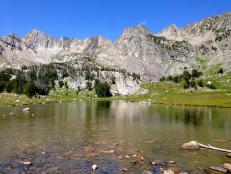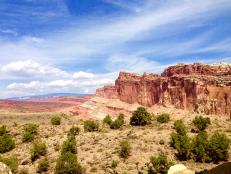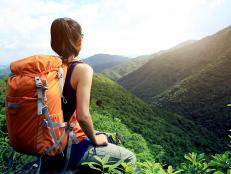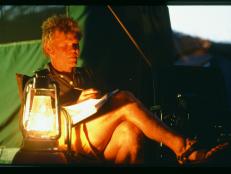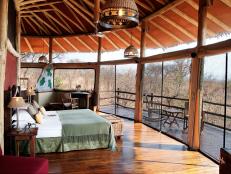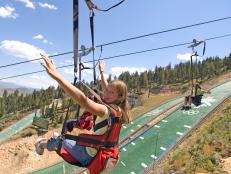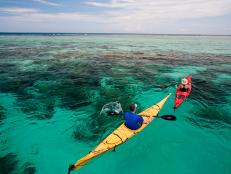What To Do if a Bear Attacks

Keep your distance and keep your guard up. But relax and don’t let fear overtake you. That's the advice wildlife biologist Joe Yarkovich gives to park visitors asking how to behave when spotting a black bear in the Great Smoky Mountains National Park.

Thinkstock
Getting a glimpse of a black bear in the wild isn't that common in the Smokies. I've seen just one bear in the wild, and that encounter was no more than watching a little black bear hightail it across a roadway in Tennessee. He clearly wanted to keep his distance. Maybe he knew most parks make it illegal for people and bears to get too close.
Most bears would rather be left alone, so it's unlikely you'll have a threatening encounter (for example, the National Park Service estimates the chance for a Yellowstone visitor to be injured by a bear is 1 in 2.2 million). But as we move into spring and plan any outdoor adventures that take us into bear country, it's smart to understand the rules for safer travel and a good idea to know what to do if you cross paths with an aggressive bear.
Back away from a bear who hasn't noticed you, but never run away, says Rick Kahn, a National Park Service wildlife biologist stationed in Ft. Collins, Colo. "All you need to know is that they are faster than you," says Kahn, who advises you hold your ground if a bear approaches, stay calm and make yourself look as large as possible.
Brown Bears vs. Black Bears
If the bear becomes aggressive and then attacks, the best defensive action depends on whether you're facing a brown bear or a black bear. Brown bears—or grizzly bears—(pictured above) roam the West and can range in color from black to blonde, but are recognizable by their distinct shoulder hump and dish-shaped face. Black bears, which make their home on both sides of the country, can be black, brown or cinnamon in color.
Kahn says brown bears are more aggressive than smaller black bears. "They did not evolve with any predators, so their instincts are to stand their ground.”
The National Park Service advises that if a brown bear attacks, you should play dead by lying flat on your stomach with your hands clasped behind your neck. Leave your backpack on if you’re wearing one. Spread your legs to make it harder for the bear to turn you over. If a brown bear continues to attack, fight back vigorously.
In the event of a black bear attack, try to get to a safe place such as a car or a building. Yarkovich advises you fight back rather than play dead. "You want to engage the bear and be as aggressive as you can," says Yarkovich. "You would essentially grab a stick or rock and do your best to fight the bear away from you. If it is a true predatory attack, the bear will be extremely persistent and the person may have to continue fending off the bear for quite some distance as they retreat towards safety.
Basic Tips for Safer Travel
It's common backcountry advice to make noise while hiking so you won't startle a bear who might be ambling along in your direction. Yarkovich suggests an easier-to-follow rule: Don't travel in bear country alone. "In general, people traveling in a group are making enough noise so a bear can hear you coming," says Yarkovich, adding that he prefers travelling with a friend over carrying a bear bell.
When camping, separate your food and any scented items, such as deodorants and other toiletries, from your tent site. Hang your pack in a tree away from your tent, cook away from your sleeping area, don’t dump food in your fire ring and store your food in bear-proof containers.
For defense, carry bear spray in an easily-accessible place and know how to use it.
When making your travel plans, check with the park service for any reported bear activity in the area and while on-trail, ask fellow travelers if there have been any recent sightings in the area. And always have a plan B, as you may just have to change routes for safety.
Be aware of your surroundings and know if you're traveling near any food sources, such as along streams. And always give the bear space to flee, says Kahn. "You just don't approach them, period."
